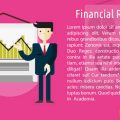Introduction to ETFs and Traditional Funds
When it comes to investing in the UK, understanding the difference between Exchange Traded Funds (ETFs) and traditional funds is essential for making informed decisions. Both offer investors a way to access a broad range of assets, but they do so through distinct structures and mechanisms. ETFs are investment funds that are traded on stock exchanges, much like individual shares. This means UK investors can buy and sell them throughout the trading day at market prices. In contrast, traditional funds—such as unit trusts and OEICs (Open-Ended Investment Companies)—are typically bought and sold at the end of the trading day based on their net asset value (NAV). While both types of funds pool money from multiple investors to invest in diversified portfolios, ETFs generally offer greater flexibility, lower ongoing charges, and increased transparency. However, traditional funds remain popular due to their long-standing presence in the market and suitability for regular savings plans. For UK investors weighing up these options, it is important to grasp how each operates within the local regulatory environment and what this means for costs, accessibility, and overall investment strategy.
2. How ETFs and Traditional Funds Work in the UK
Understanding the core differences between Exchange-Traded Funds (ETFs) and traditional funds is crucial for UK investors aiming to make informed decisions. Both vehicles pool investors’ money into diversified baskets of assets, but their structure, mechanics, and regulatory treatment can vary significantly. Below, we break down how each operates within the UK context.
Structure and Mechanics
ETFs are investment funds traded on stock exchanges much like individual shares. They typically track an index, commodity, or a basket of assets and are designed for intraday trading. In contrast, traditional funds—such as unit trusts and OEICs (Open-Ended Investment Companies)—are bought and sold at the fund’s net asset value (NAV), which is calculated once per day after markets close. This fundamental difference shapes liquidity, pricing, and trading flexibility.
| ETFs | Traditional Funds (Unit Trusts/OEICs) | |
|---|---|---|
| Trading | On London Stock Exchange during market hours | Bought/sold directly from fund manager at end-of-day NAV |
| Pricing | Real-time, fluctuates throughout the trading day | Once daily after market close |
| Minimum Investment | No minimum—can buy a single share | Often £500–£1,000 minimum |
UK-Specific Legalities and Regulations
Both ETFs and traditional funds must comply with regulations set by the Financial Conduct Authority (FCA). However, there are nuances:
- ETFs: Most ETFs available to UK investors are UCITS-compliant (Undertakings for Collective Investment in Transferable Securities), providing a level of investor protection and allowing them to be marketed across Europe. They are also subject to exchange listing rules and ongoing disclosure obligations.
- Traditional Funds: Unit trusts and OEICs are regulated under the FCA’s Collective Investment Schemes Sourcebook (COLL). These structures offer daily liquidity and transparent pricing but may involve initial or exit charges.
Tax Considerations
Both investment vehicles benefit from tax wrappers such as ISAs and SIPPs in the UK, helping investors shelter gains from Capital Gains Tax (CGT) or Income Tax. However, it’s important to note that ETF dividends may be treated as foreign income depending on domicile status, while OEICs/unit trusts often pay UK dividend distributions.
Summary Table: Key Distinctions for UK Investors
| Feature | ETFs | Traditional Funds |
|---|---|---|
| Regulatory Framework | UCITS/FCA/Exchange rules | FCA COLL regime |
| Pension/ISA Eligibility | Yes (if UCITS-compliant) | Yes |
This practical overview highlights the operational distinctions and regulatory nuances facing UK investors choosing between ETFs and traditional funds. Each vehicle has merits depending on personal circumstances and investment objectives.
![]()
3. Costs and Fees Comparison
When evaluating ETFs versus traditional funds in the UK, a key consideration is the overall cost structure. Understanding these charges is crucial for UK investors aiming to maximise their returns while minimising unnecessary expenses.
Management Fees
ETFs typically come with lower ongoing charges (often referred to as Ongoing Charges Figure, or OCF) compared to actively managed traditional funds. For example, many FTSE 100 ETFs have OCFs below 0.25%, whereas active mutual funds may charge between 0.75% and 1.5% per annum. This difference can significantly impact long-term investment growth, especially when compounded over several years.
Trading Costs
One unique aspect of ETFs is that they are traded on the London Stock Exchange like shares, which means investors must pay brokerage commissions each time they buy or sell units. Additionally, there is often a bid-ask spread – the difference between the buying and selling price – which can slightly erode returns, particularly for less liquid ETFs. In contrast, traditional funds are usually bought and sold directly through fund managers at a single daily price, without incurring separate dealing fees.
Hidden Charges
Beyond headline rates, investors should be mindful of other potential costs. Some traditional funds impose initial charges (entry fees) or exit penalties if you redeem your holdings early. While these are becoming less common due to regulatory pressures in the UK, it’s important to scrutinise fund documents for any such fees. Similarly, both ETFs and mutual funds may incur transaction costs within the portfolio itself (for example, stamp duty reserve tax on certain UK shares or internal dealing costs), which are not always fully disclosed upfront but can affect net performance.
The Bottom Line for UK Investors
In summary, while ETFs generally offer greater fee transparency and lower ongoing charges, they introduce trading-related costs that must be considered, especially for frequent traders or those investing small amounts. Traditional funds might appear more straightforward for regular contributions but can carry higher management costs and occasional hidden fees. A careful comparison of all explicit and implicit charges will help ensure your investment choice aligns with your financial goals and minimises avoidable outlays in the UK market.
4. Tax Considerations for UK Investors
When choosing between ETFs and traditional funds, UK investors must pay close attention to the different tax implications. The structure of these investment vehicles can affect how much tax you owe and when you owe it. This section provides a useful guide to the typical tax considerations, including Capital Gains Tax (CGT), Stamp Duty, and eligibility for ISAs and SIPPs.
Capital Gains Tax (CGT)
Both ETFs and traditional funds are subject to Capital Gains Tax when held outside a tax-advantaged wrapper such as an ISA or SIPP. However, how CGT is applied can differ depending on whether you are investing in accumulating or distributing share classes, or in certain fund structures. Here’s a comparison:
| Investment Type | CGT Implications |
|---|---|
| ETFs | Gains realised upon sale may be subject to CGT; reporting is investor’s responsibility. |
| Traditional OEIC/Unit Trusts | Gains realised upon sale may be subject to CGT; income distributions also potentially taxable. |
Stamp Duty Reserve Tax (SDRT) and Transaction Taxes
The way you buy into your chosen fund impacts your upfront costs:
| Investment Type | Stamp Duty/SDRT? |
|---|---|
| ETFs (listed on LSE) | No Stamp Duty on purchase, which can lower transaction costs. |
| UK-Domiciled OEICs/Unit Trusts | No Stamp Duty for most open-ended funds. |
| Investment Trusts (closed-ended) | Subject to 0.5% Stamp Duty on purchases. |
ISA and SIPP Eligibility
Tax efficiency is often maximised by holding investments inside an ISA or SIPP, shielding gains and income from tax. Most mainstream ETFs and traditional funds are eligible, but there are nuances:
- ISAs: Most UCITS-compliant ETFs and authorised unit trusts/OEICs can be held within a Stocks & Shares ISA, making any gains or income tax-free.
- SIPPs: Similarly, most ETFs and traditional funds are permitted in SIPPs. Income and gains within a SIPP grow tax-free until withdrawal.
- Caveat: Some specialist or non-UCITS ETFs may not be eligible—always check HMRC-approved lists before investing.
Summary Table: Key Tax Points for UK Investors
| ETFs | Traditional Funds (OEICs/Unit Trusts) | |
|---|---|---|
| CGT Liability Outside Wrapper? | Yes | Yes |
| Stamp Duty on Purchase? | No (for most ETFs) | No (open-ended); Yes (investment trusts) |
| ISA/SIPP Eligible? | Usually Yes* | Yes* |
| Payout Options (Income/Accumulation)? | Yes (varies by ETF) | Yes (varies by fund) |
*Check specific product eligibility before investing.
5. Liquidity and Trading Flexibility
When considering ETFs versus traditional funds, UK investors should pay close attention to the liquidity and trading flexibility each option offers. These factors directly impact how easily and efficiently you can buy or sell your investments, as well as how quickly you can respond to market movements.
Daily Dealing: How Access Differs
Traditional funds—like unit trusts and OEICs (Open-Ended Investment Companies)—typically operate on a daily dealing basis. This means that all buy and sell orders are processed at the next valuation point, usually once per day, based on the fund’s net asset value (NAV). As an investor, this can mean waiting until the end of the trading day to know your exact transaction price. In contrast, ETFs are traded throughout the London Stock Exchange’s open hours. You can buy or sell shares in real-time, with prices fluctuating throughout the day just like individual stocks. For active investors or those keen to capitalise on intra-day market movements, this level of flexibility is a significant advantage.
Liquidity: What Does It Really Mean?
Liquidity refers to how quickly and easily you can convert your investment into cash without affecting its price. With traditional funds, liquidity is largely dependent on the underlying assets—if a fund holds illiquid securities, redemptions might be delayed or subject to pricing adjustments during times of market stress. ETFs generally benefit from two layers of liquidity: the liquidity of their underlying holdings and the trading activity on the stock exchange. Even if an ETF itself doesn’t trade heavily, authorised participants can create or redeem shares in large blocks (“creation units”), helping maintain liquidity and keeping prices closely aligned with NAV. For most mainstream ETFs listed in the UK, this structure helps ensure you can enter or exit positions swiftly, even during volatile periods.
Accessing and Redeeming Your Holdings
For traditional funds, investors typically go through platforms or fund managers to place orders, with settlement taking place over several days. Withdrawals may be subject to minimum notice periods or exit fees, depending on the fund provider. By contrast, ETFs offer immediate access via your brokerage account: you simply place a buy or sell order through your chosen platform, and transactions settle in line with standard stock exchange practices—usually within two working days (T+2). This streamlined process appeals particularly to DIY investors who value speed and autonomy when managing their portfolios.
The Bottom Line for UK Investors
If having instant access to your investments and greater control over execution is important to you, ETFs present a compelling case over traditional funds. However, for those comfortable with less frequent trading and who value simplicity over flexibility, traditional funds remain a solid choice. Ultimately, understanding these differences is key to making informed decisions that fit both your investment style and personal preferences as a UK investor.
6. Risks and Suitability
When comparing ETFs and traditional funds, understanding the risks involved and determining which is suitable for your investment profile is crucial, particularly within the context of the UK market. Both vehicles carry distinct risk factors that can impact performance, liquidity, and your overall financial goals.
Market and Liquidity Risks
ETFs are traded throughout the day on the London Stock Exchange, exposing investors to intraday market volatility. This means ETF prices can fluctuate due to market sentiment or trading volumes, which may lead to wider bid-ask spreads in less liquid ETFs. In contrast, traditional funds such as OEICs (Open-Ended Investment Companies) or unit trusts are typically priced once daily based on their net asset value (NAV), reducing exposure to intraday volatility but also limiting flexibility in trade timing.
Tracking Error and Management Style
Most ETFs aim to passively track an index and thus are susceptible to tracking error—the deviation between the ETF’s performance and its benchmark index. While UK-regulated index funds face similar challenges, actively managed traditional funds may diverge further from their benchmarks depending on fund manager decisions. This could be beneficial in volatile or falling markets if the manager outperforms, but it also introduces manager risk.
Costs and Tax Considerations
ETFs generally offer lower ongoing charges compared to many active traditional funds available in the UK. However, UK investors should consider dealing fees associated with ETF trades on platforms as well as potential stamp duty reserve tax (SDRT) exemptions that apply to most ETFs but not all traditional funds. Tax treatment may also vary: both structures can be held in ISAs or SIPPs, but income distributions and capital gains need careful attention for optimal tax efficiency.
Suitability: Which Investor Fits Each Option?
ETFs: Often better suited for cost-conscious investors seeking transparency and flexibility, such as DIY investors comfortable with online trading platforms or those looking for precise portfolio allocations. ETFs may also appeal to experienced investors who wish to implement tactical moves or strategies with real-time pricing.
Traditional Funds: More appropriate for those preferring a hands-off approach or access to active management. Investors who value professional stock-picking, smoother valuation processes, or regular savings via monthly direct debits might find traditional funds more convenient—especially if they’re less concerned with intraday trading.
UK-Specific Factors to Weigh
The regulatory environment in the UK provides robust investor protections across both product types, including FSCS coverage up to £85,000 per firm. Platform choice matters: not all platforms offer commission-free ETF trading or access to certain fund classes. Finally, consider your own risk appetite, investment horizon, and familiarity with dealing processes before deciding between ETFs and traditional funds.
7. Conclusion and Key Takeaways for UK Investors
In summary, the choice between ETFs and traditional funds is highly dependent on your personal investment goals, risk tolerance, and preferred style of management. ETFs offer UK investors flexibility, real-time trading, and typically lower costs, making them attractive for those seeking efficiency and transparency. Traditional funds, such as unit trusts and OEICs, may appeal to investors who value professional active management and are comfortable with less frequent pricing.
It’s important for UK investors to consider factors like fund charges, tax implications (especially with ISAs and SIPPs), trading flexibility, and the level of control you want over your portfolio. Both options have their strengths: ETFs can be well-suited to hands-on investors looking for market exposure at a lower cost, while traditional funds can suit those preferring a more passive approach or access to specific fund manager expertise.
Before making any decisions, always review the underlying assets, track record, and fee structure of any fund. Consider speaking with a regulated financial adviser if you’re unsure which route aligns best with your objectives. Ultimately, both ETFs and traditional funds can play valuable roles in a diversified investment strategy tailored for the UK market. The key is to remain informed, review your investments regularly, and ensure they continue to meet your long-term financial goals.


